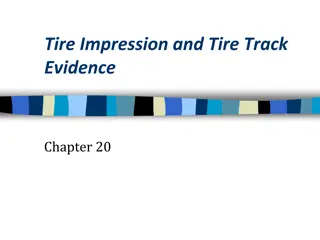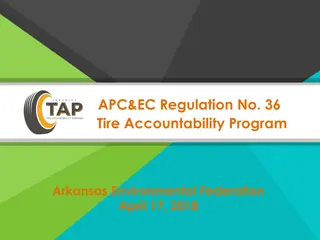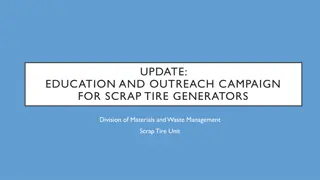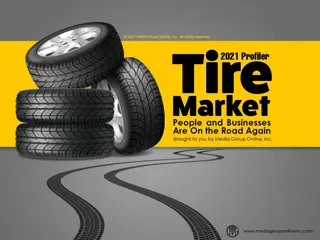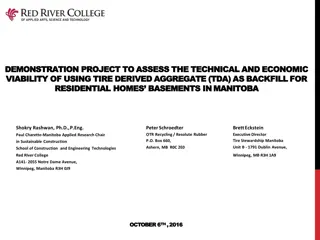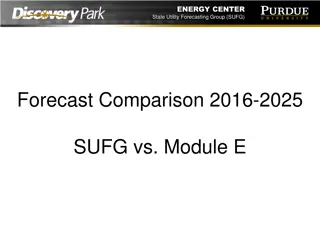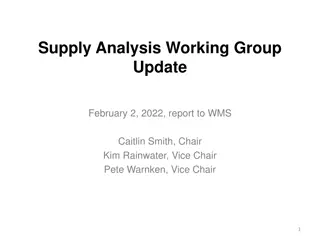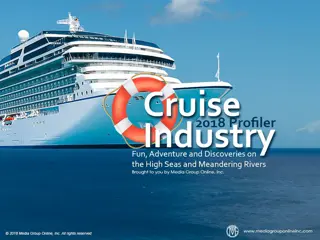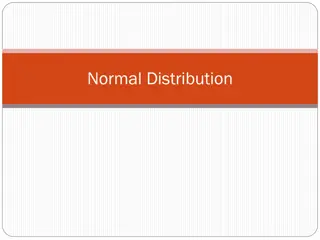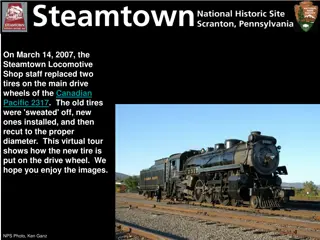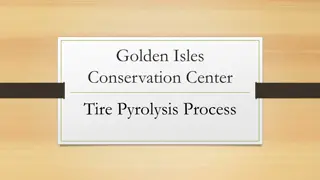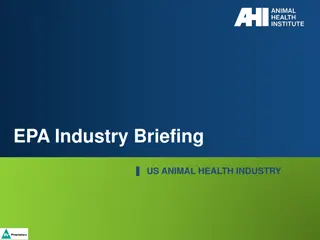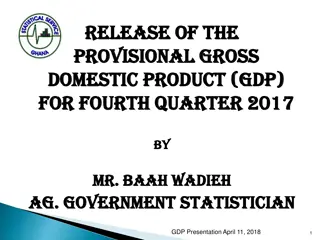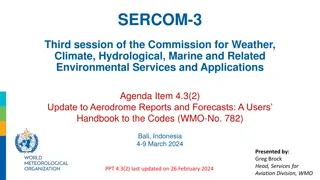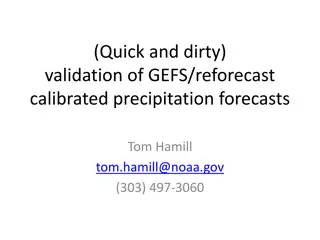Tire Industry Insights 2017-2018: Trends and Forecasts
Industry data reveals mixed results for the tire market in 2017, with varying shipment trends, market share shifts among top brands, and the dominance of independent tire dealers. The cost of raw materials has led to price increases for major brands. However, growth is expected in the second half of 2018. Michelin stands out as the top choice in original equipment tires across multiple vehicle categories. The commercial tire sector rebounded in 2017 and is showing positive signs for 2018.
Download Presentation

Please find below an Image/Link to download the presentation.
The content on the website is provided AS IS for your information and personal use only. It may not be sold, licensed, or shared on other websites without obtaining consent from the author. Download presentation by click this link. If you encounter any issues during the download, it is possible that the publisher has removed the file from their server.
E N D
Presentation Transcript
A Mixed Bag of Results for 2017 o In the latest data from Modern Tire Dealer, total 2017 shipments of US replacement tires increased 1.3% from 2016, to 258.3 million units; however, passenger tires increased a meager 0.03%, although the average age of all vehicles was 11.7 years. o Shipments of light-truck tires decreased 1.9% from 2016, to a total of 30.8 million, while medium-/heavy-truck tires had the largest increase, or 4.3%, to 19.5 million units. o During 2018, dealers indicated some improvements, as April and July 2018 unit sales volumes increased 1.0% each month; however, August s increase was 0.5%. Industry experts are forecasting a much better second half of 2018 than the first half.
Top Brands Have Trouble Maintaining Market Share o Of the three top tire brands, Goodyear (#1) lost market share from 2016 to 2017 in replacement passenger tires, from 13% to 12%; Michelin (#2) maintains its share of 9.5%; and Bridgestone s (#3) market share decreased from 8.0% to 7.5%. o According to Modern Tire Dealer analysis, tier-2 tire brands, such as Firestone and Cooper; tier-3, or value brands, which are typically private brands; and tier-4, low-cost radials, mostly imported from China, outperformed the top brands during 2017. o The cost of raw materials to manufacture a common replacement tire increased 11% during September 2018, which is likely driving many major brands, including Goodyear, Michelin, Bridgestone and others, to announce price increases during late 2018.
Independent Dealers Are Where Most Americans Buy Their Tires o According to Modern Tire Dealer, independent tire dealers had more than 5 times the consumer tire retail market share than #2 mass merchandisers, at 61.5% and 11.5%, respectively, increasing from 60.5% during 2015. o Based on this dominance, it s not surprising independent dealers generated the largest sales profit margins in the retail passenger sector, 24.8%, and the retail light-truck sector, 24.6%, during 2017. o Independent dealers continue to grow during 2018. Discount Tire, the largest, opened its 1,000thstore during September, while smaller dealers Tire Discounters added 4 locations to a total of 112 and Point S added 16 new stores during 2018.
Original Equipment Michelin Tires Are the Top Choice o According to the J.D. Power 2018 US Original Equipment Tire Customer Satisfaction StudySM, Michelin is the clear winner, and in all four vehicle categories: luxury, passenger car, performance sport and truck utility. o The top three in the luxury category were Michelin (765), Pirelli (724) and Goodyear (717), with the same three tops in passenger cars, but in a different order: Michelin (753), Goodyear (707) and Pirelli (703). o Michelin also posted a large gap in performance sport, or a score of 774, compared to Goodyear (740) and Bridgestone (712). The gap was similar in the truck/utility category: Michelin (731), Goodyear (691) and Bridgestone (684).
Commercial Tire Sector Rebounds During 2017 and into 2018 o 2017 didn t start well for the commercial-tire sector, but then increased demand resulted in a new record of 19.5 million shipped replacement tires, primarily because a pending tariff on Chinese- manufactured truck and bus tires was negated. o Because Chinese tires could continue to be imported into the US, the 2017 total of 14.3 million retreaded truck tires decreased 1.4% from 2016. Bridgestone (Bandag) had the largest market share of retreads, or 44.0%, with Goodyear a distant second, at 23.5%. o Although 2018 also started slow, during April, the U.S. Tire Manufacturers Association (USTMA) forecasted total replacement truck tire shipments would increase 1.7%, to 20 million units, and OE shipments +3.7%, to 5.6 million units.
Online Tire Buying Isnt a Major Factor Yet o Buying tires online is still a small share of all consumer replacement tires, increasing to a 7% share during 2017, or 16.7 million units, from a 6% share during 2016. o Although Amazon has forged agreements with Sears and Monro Inc. to install the tires consumers buy online, the 4 largest manufacturers Michelin, Bridgestone, Goodyear and Continental and their dealers are not expected to allow Amazon to sell their tires. o According to a Modern Tire Dealer 2017 survey, 96% of consumers who had bought tires online said they would do it again. In a separate 2017 survey from BrightLine Marketing, 94.5% of respondents said they bought their new tires from the installer.
Advertising Strategies o Winter is one of tire dealers peak seasons. Suggest a Play It Safe promotion during the Super Bowl period. Customers who make a qualifying purchase of tires, especially snow and/or all-season tires, receive a free oil change and/or a multi-point auto service checkup. o Another promotional idea is We ll Check It, You Forget It. Dealers can offer a package of free monthly tire-pressure checkups, discounted multiple oil changes throughout the year and an A/C check during early spring and a cooling system check during early fall. o With people driving their cars for more years than previously, offer a special price for tier-2 or tier-3 tires, for any vehicles 8 years or older. Show customers how much they ll save versus a tier-1 tire and still be driving on a quality tire.
New Media Strategies o Automotive services are important revenue sources for tire dealers. Suggest they place an inexpensive flyer in the driver seat of every customers vehicle on which new tires are being installed. Invite customers to opt-in to the dealer s email list for exclusive year-round offers. o Independent tire dealers can benefit from short videos, with managers and/or technicians as hosts. The topic of each video relates to seasonal safety tips, checking tire pressure regularly and the proper method and highlighting new tire makes, models and sizes. o Tire dealers can generate content for their Websites and social media and promote their community involvement by providing local organizations with discounted tires for their vehicles, including the animal shelter, low-income assisted living facilities, etc.


